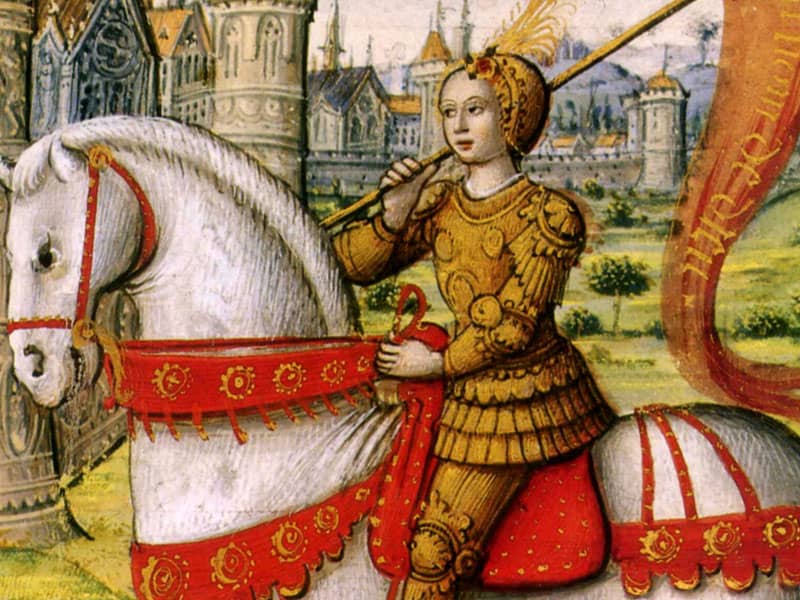Surprising as it seems, Dorothy Day, the controversial founder of The Catholic Worker movement, anti-war demonstrator, and outspoken opponent of Sen. Joe McCarthy in his heyday, has been approved for the process of study that leads to canonization in the church.
Dorothy Day's influence was not just a positive factor in helping people better their own lives, but she inspired them to work for the betterment of others'. Perhaps most important of all, Dorothy did not simply espouse her faith but lived it by welcoming the winos and derelicts who came to her door, for her ideal was "to see Christ in every man."
In living their faith, saints sacrifice their own comfort, welfare, and safety for the benefit of others, as Dorothy did in going to jail, when she was well into her 70s, to protest the injustices against workers and minorities, and what she felt was the unjust war in Vietnam. She lived frugally among the poor she worked for, eschewing any luxuries.
 | ||
| "The influence of genuine saints is not limited to their own time and place but seems to go out in waves, not only to different places but different times." | ||
 |
The influence of genuine saints is not limited to their own time and place but seems to go out in waves, not only to different places but different times. The work of Dorothy Day, which began in a notorious slum more than half a century ago, has spread to cities throughout the country, such as Boston and Los Angeles, where Catholic Worker "Hospitality Houses" serve the poor today. Her message is carried in books about her and by her--like her spiritual autobiography, "The Long Loneliness"--that are read not only in English but in translations throughout the world.
I first met Dorothy Day in 1956 after I had graduated from Columbia and was living in Greenwich Village. That fall, a college friend took me to see The Catholic Worker house in the Bowery as a possible subject to write about. I was fascinated by the mixture of recently revived winos and idealistic young intellectuals drawn there by the vision of this Catholic convert who was living her Christianity in service to the poor. At other "mission houses" in the Bowery, you had to "sing for your supper"--say you were saved and join in a hymn--but at The Catholic Worker you only had to be hungry.
I was also awed by Dorothy herself, who Michael Harrington described in his memoir "Fragments of the Century" as severe yet serene, like "a mystic out of a Dostoevsky novel." Her gray hair was done in a braid pinned up in the back, she wore no makeup, stood ramrod straight, and commanded a room by her very presence.
When psychiatrist-author Robert Coles was in medical school at Columbia, he went to the Bowery to meet her, only to find her engrossed in a conversation with a drunken woman. After a while, Dorothy looked up and asked, "Which one of us did you wish to talk to?" He knew at once what her priorities were. He became a volunteer, later a friend, and wrote about her in "Dorothy Day: A Radical Devotion." She was not just an important influence on his work; her prayers, Coles believes, brought about his wife’s recovery from a life-threatening illness. If the church judges this a miracle, it fulfills one of the requirements for canonization.
Dorothy’s message was selfless service, and her example of it inspired young people from across the country to seek a more meaningful life. When a Mother Superior discovered a novice nun playing Ravel’s "Bolero," she handed her a copy of the penny newspaper The Catholic Worker, telling her it was there that she belonged. Leaving her convent in California, Helen Russell got on a bus to New York and went to the "Hospitality House" in the Bowery. She later teamed up with two other young women whom she met there and moved to East Harlem, where they opened a day-care center for children. After visiting them, I moved to the neighborhood to write my first book, "Island in the City: The World of Spanish Harlem." That book led other people to the neighborhood for social work and political action, continuing the ripple effect of Dorothy’s influence.
The poet Ned O’Gorman went down from college in Vermont to volunteer at The Catholic Worker in 1954. I interviewed him in the '90s when he was running the Storefront School for Children in Harlem, which he founded. He told me, "I sometimes think I’m here in some way because I soaked up Dorothy’s vision of the human family. Her influence was profound."
And her influence continues, multiplies, lights up new lives with hope and inspiration, shining like a nimbus--"a radiant light that appears in the form of a circle or halo about or over the head of a god, saint, or sacred person."

